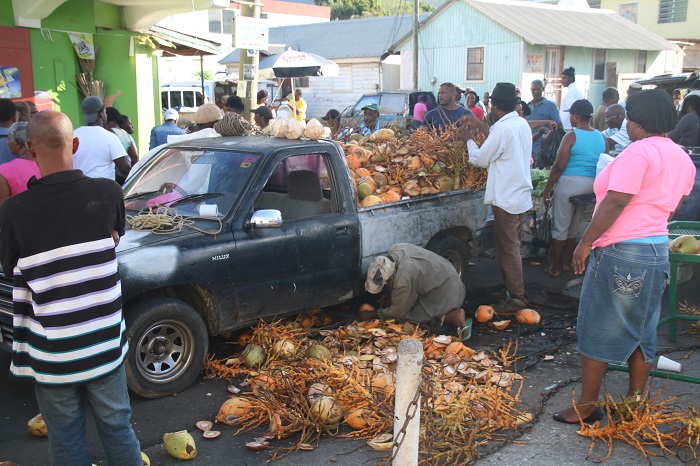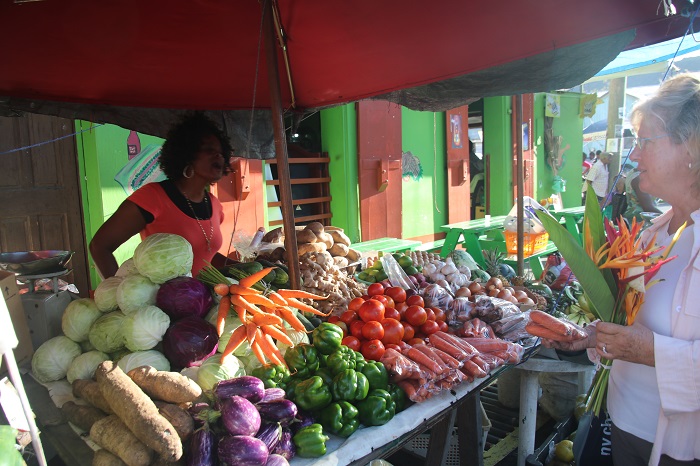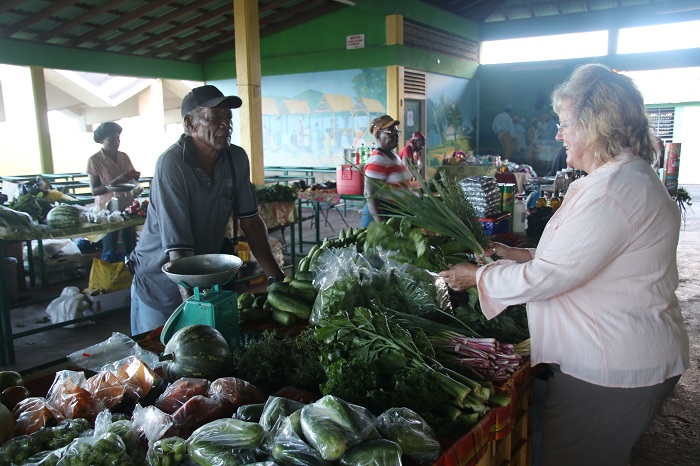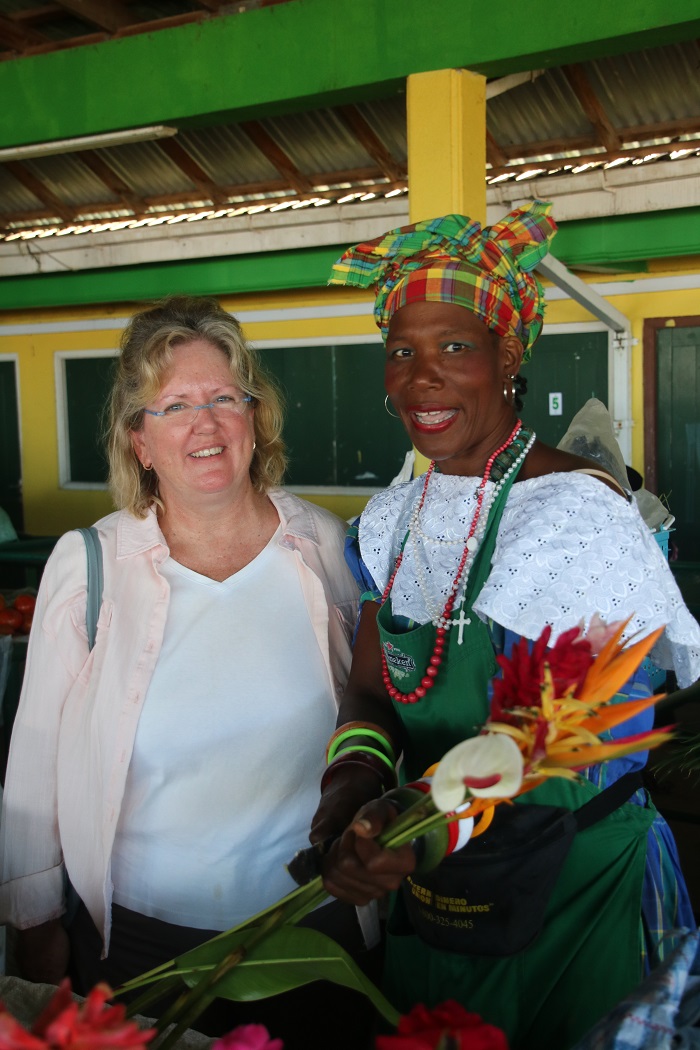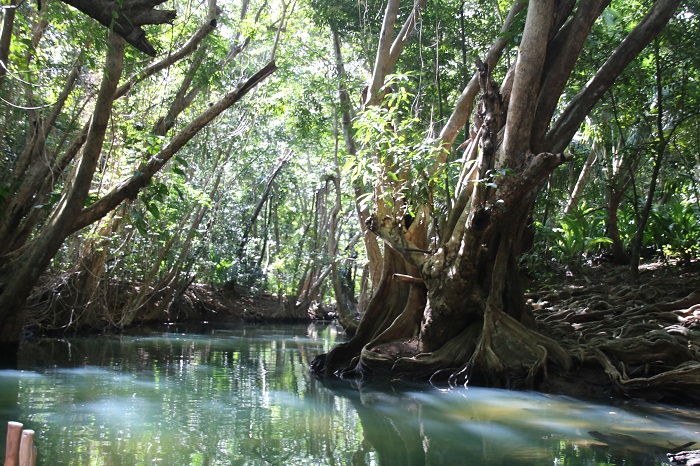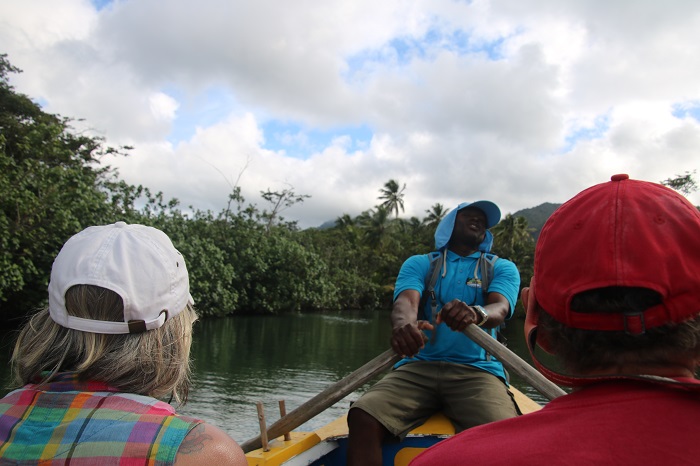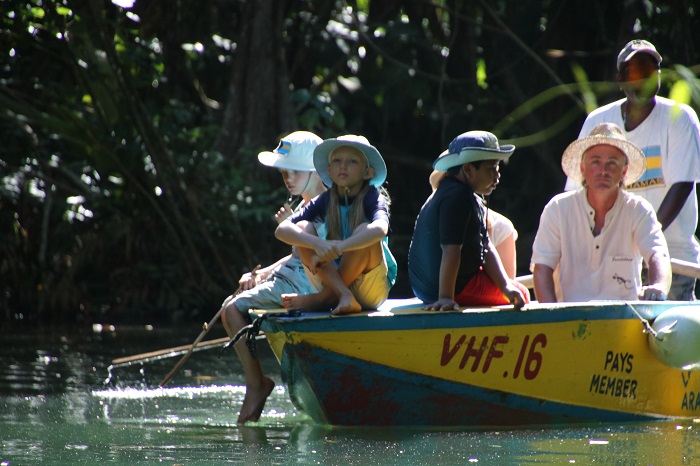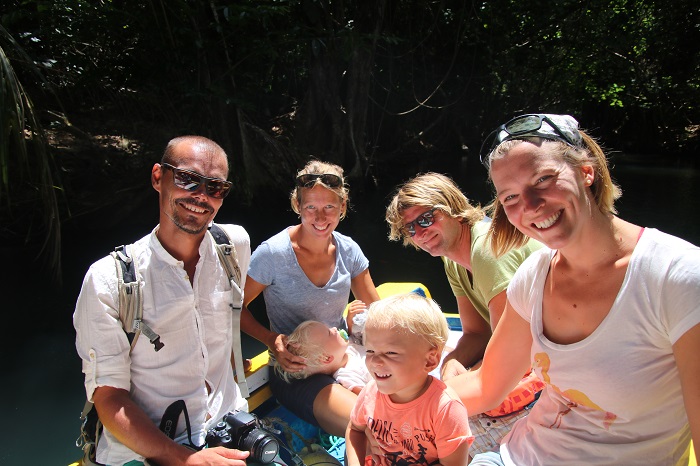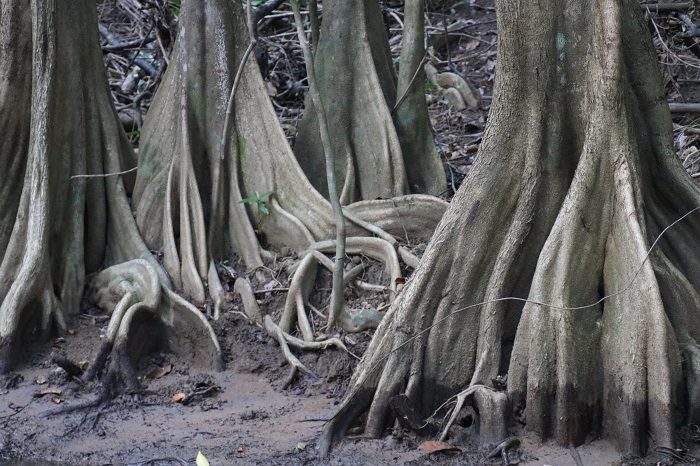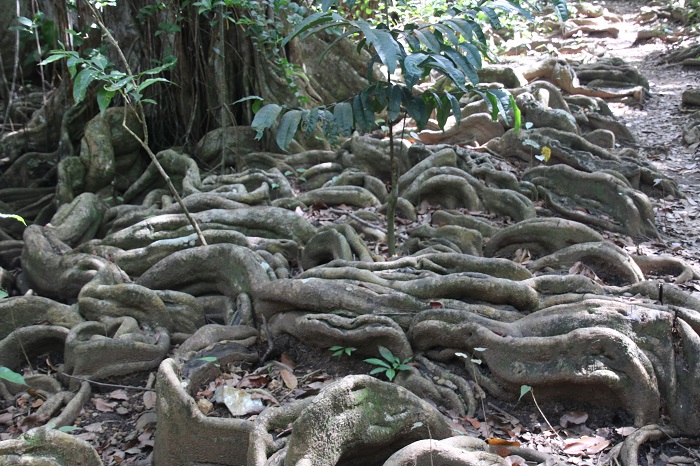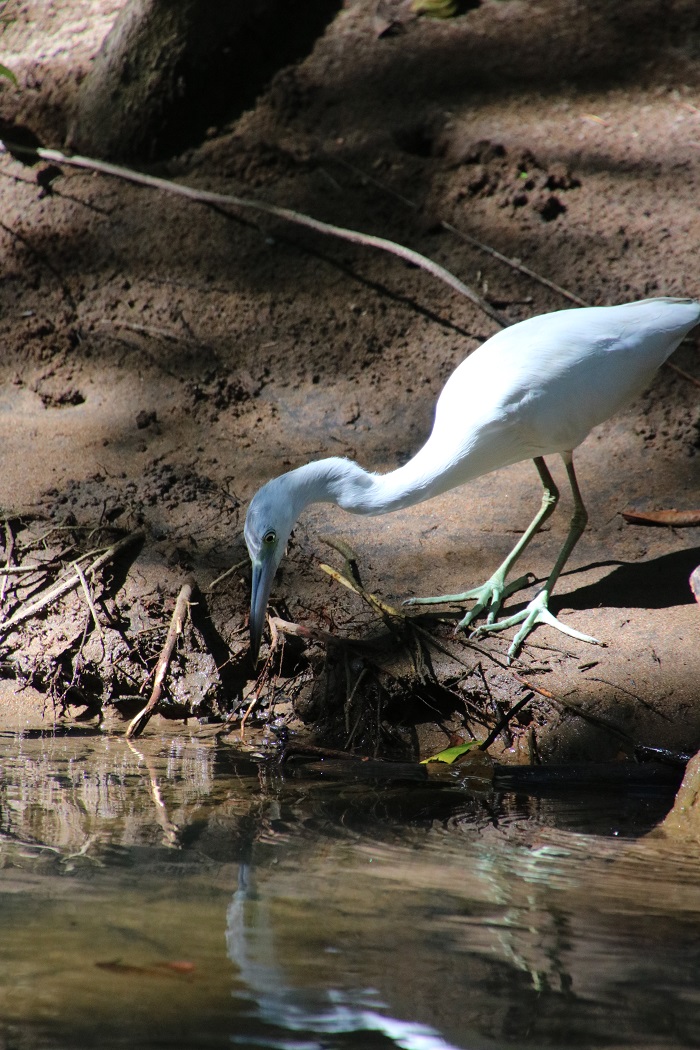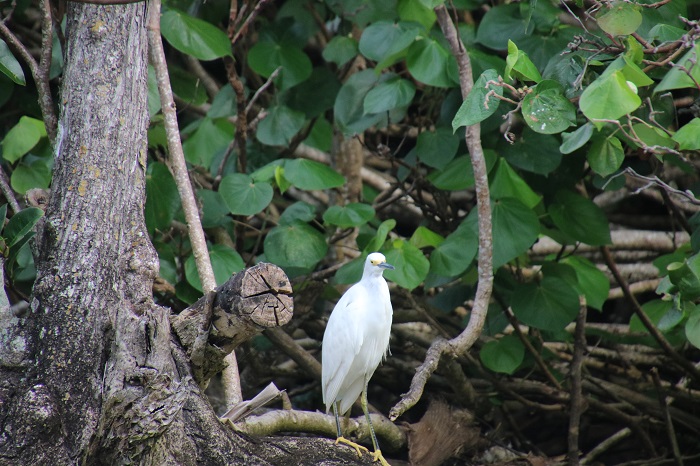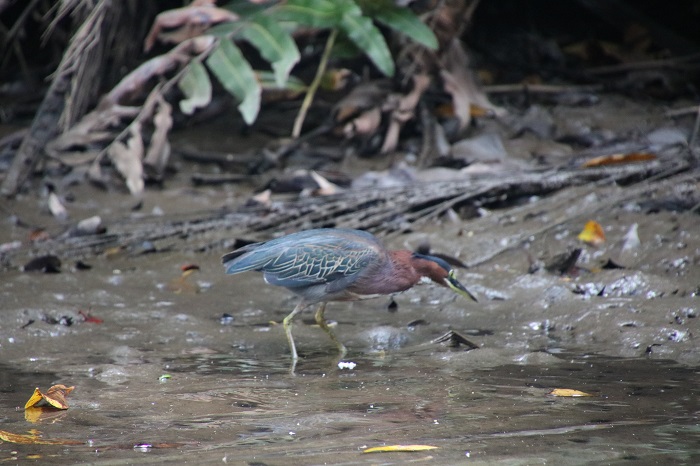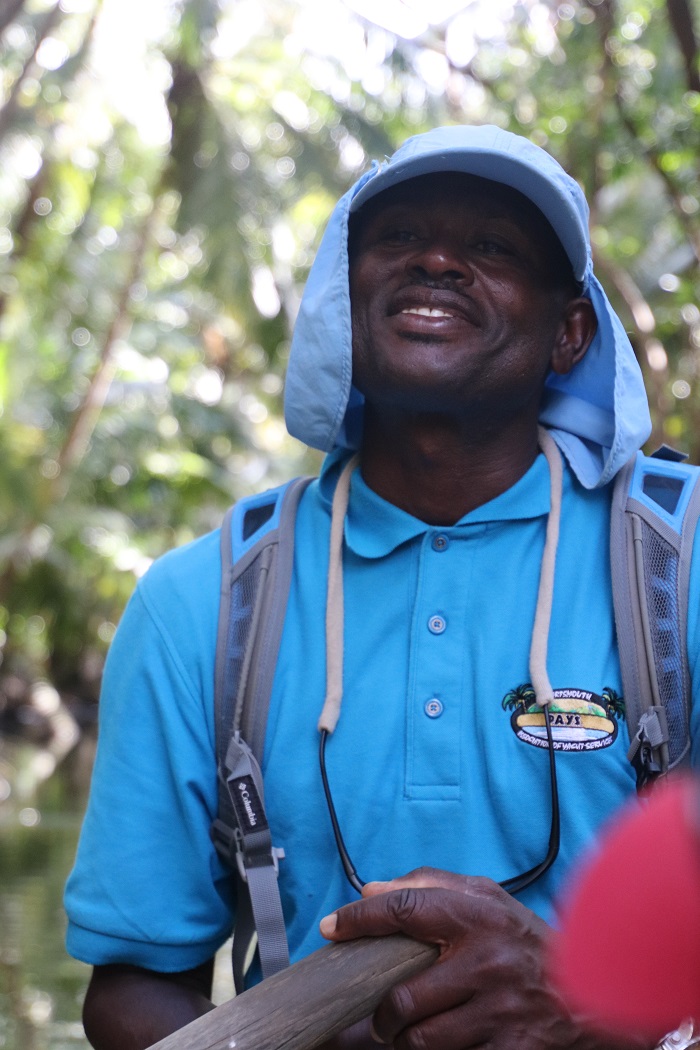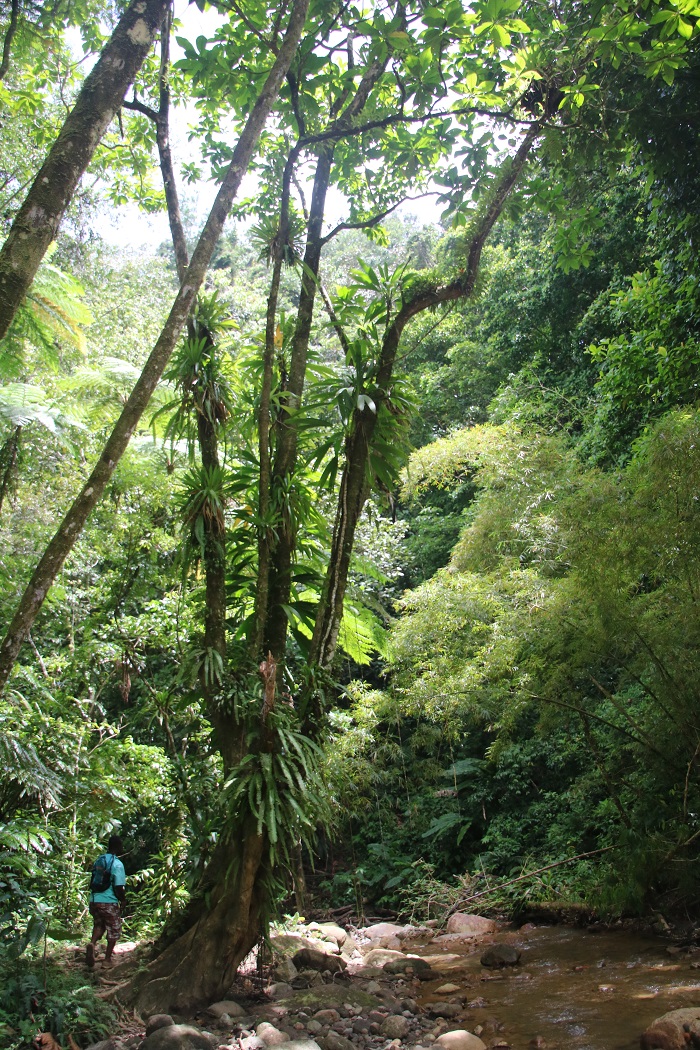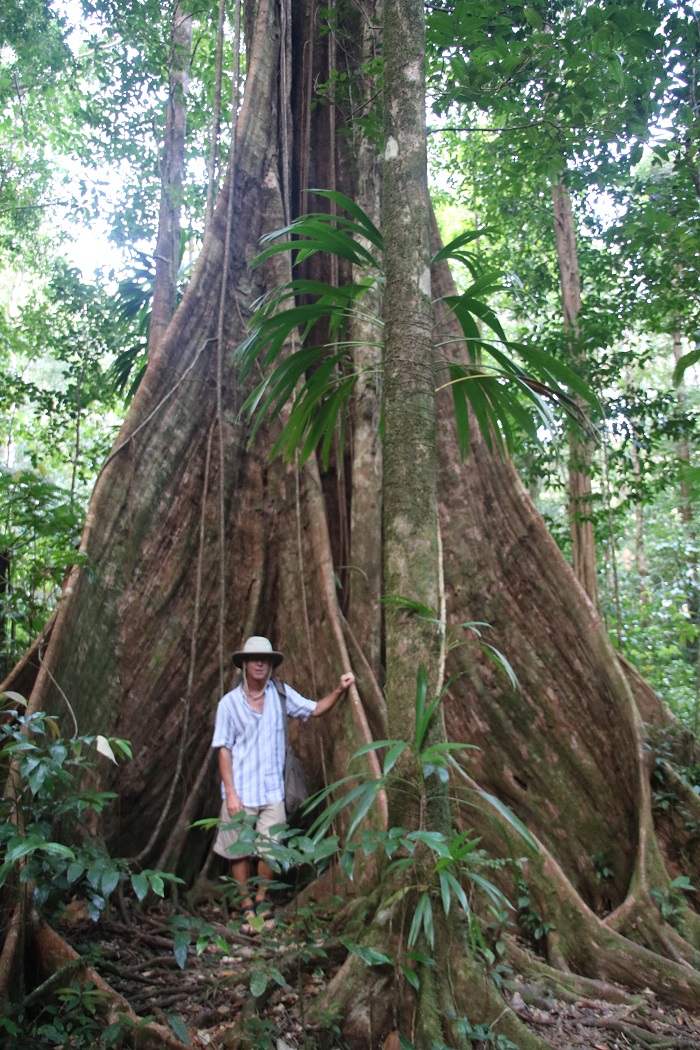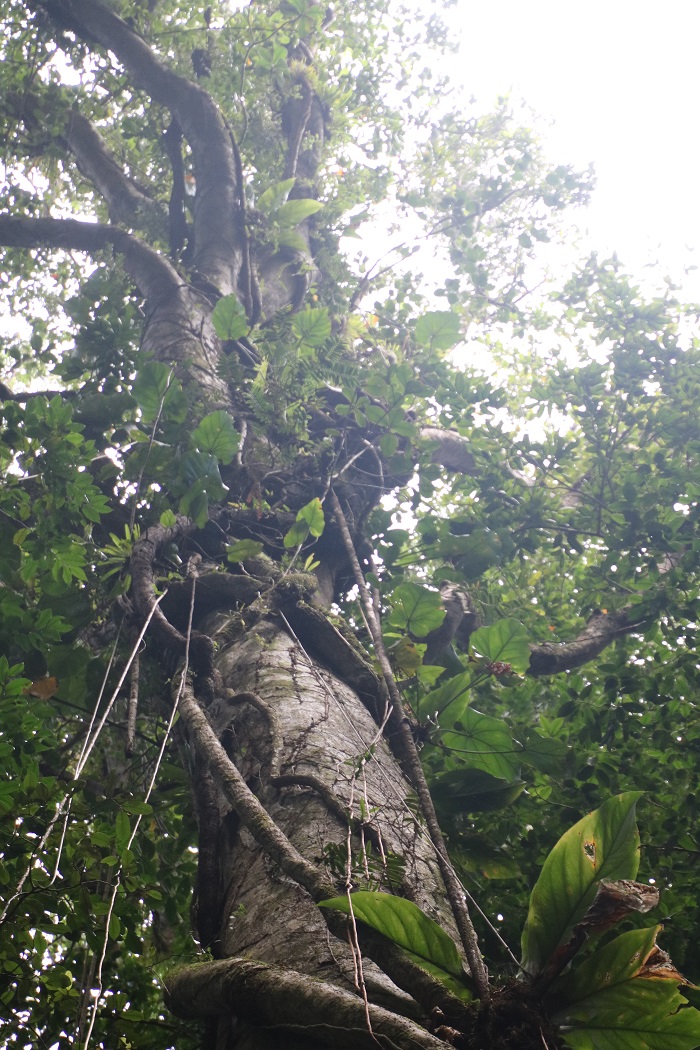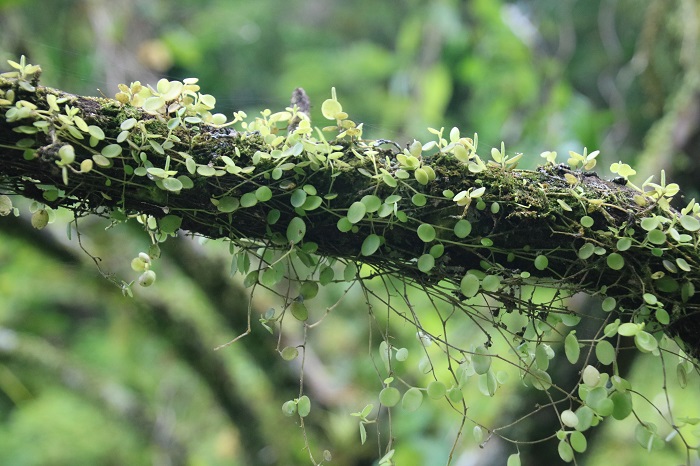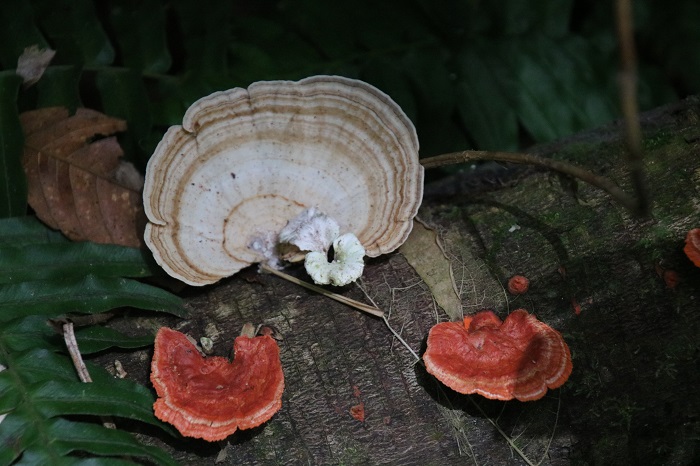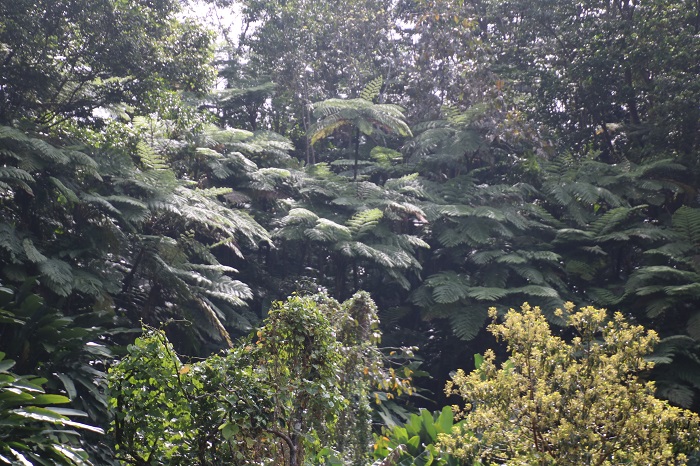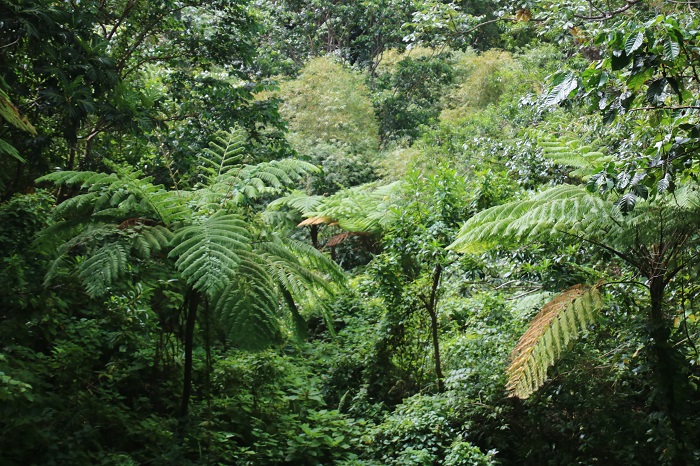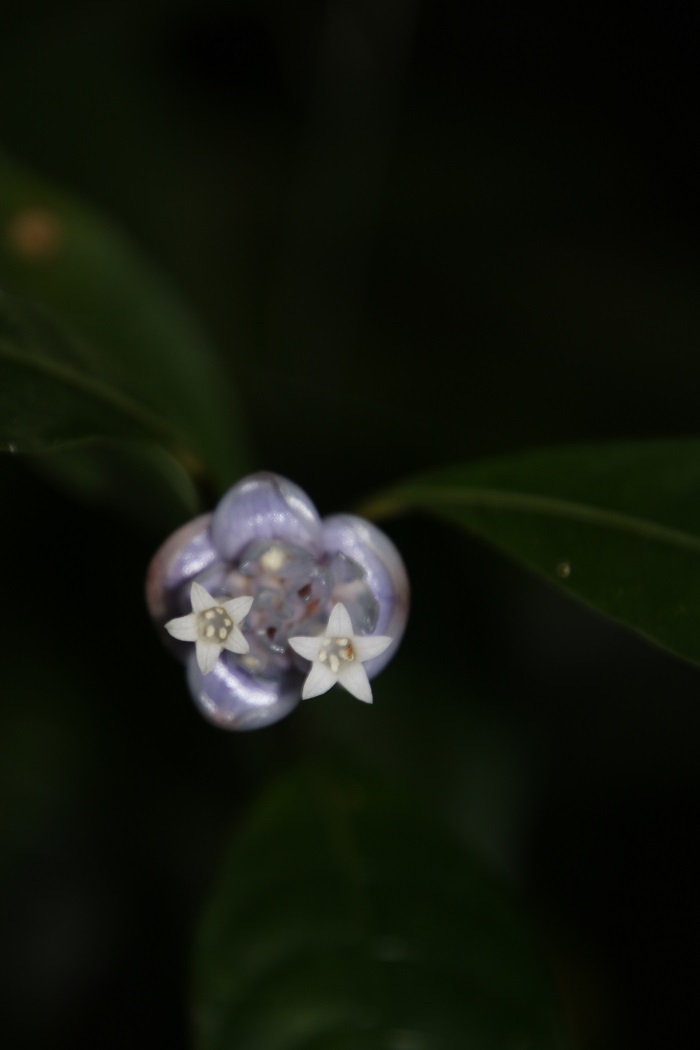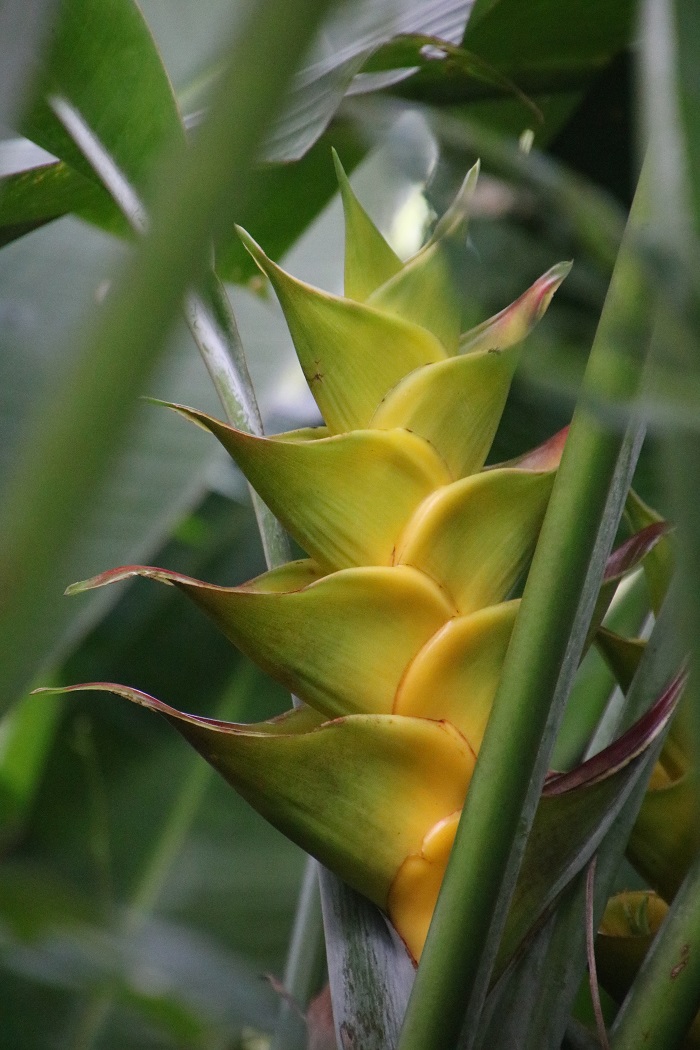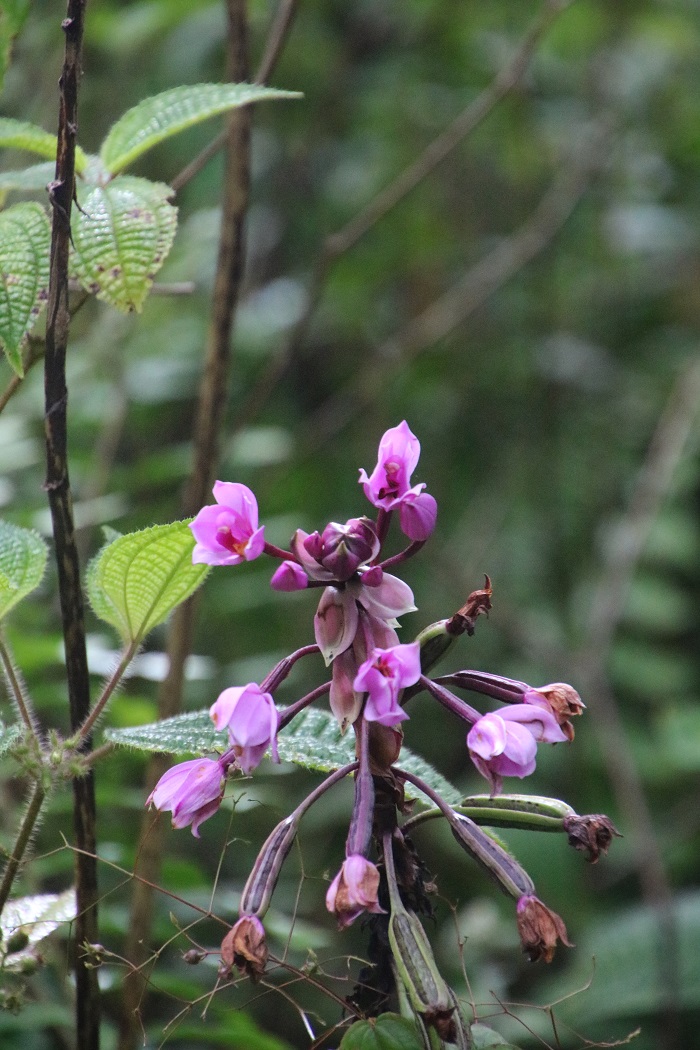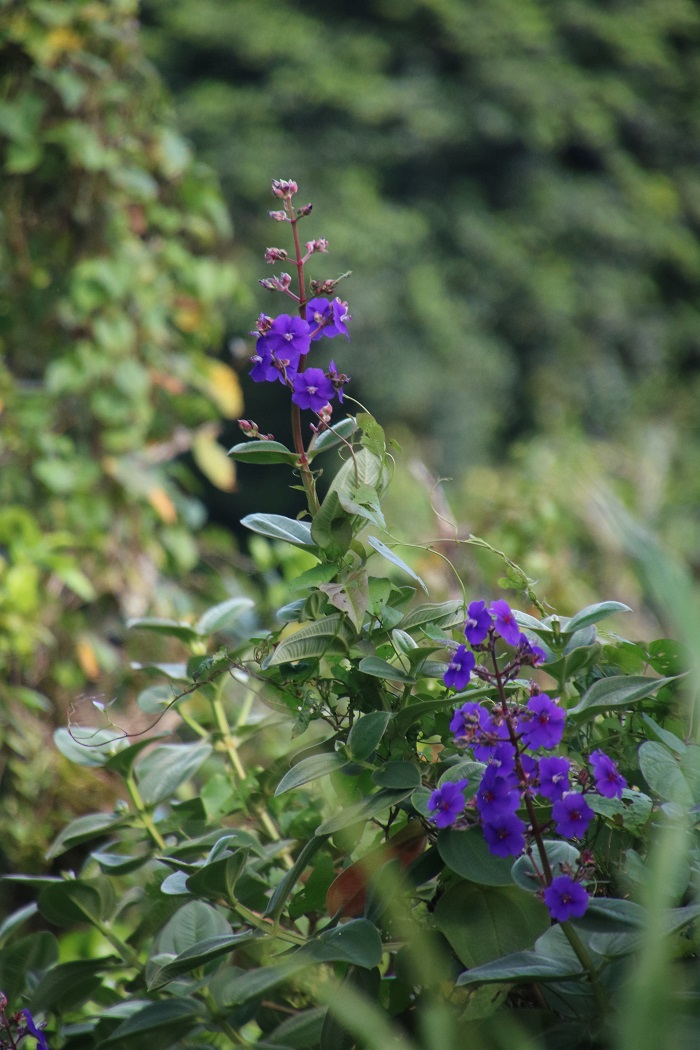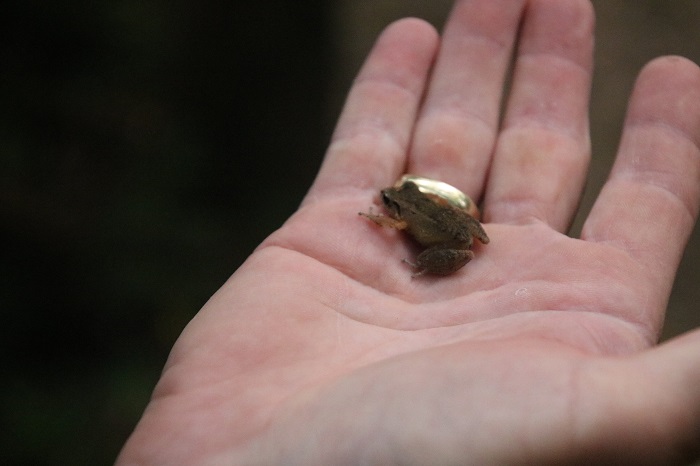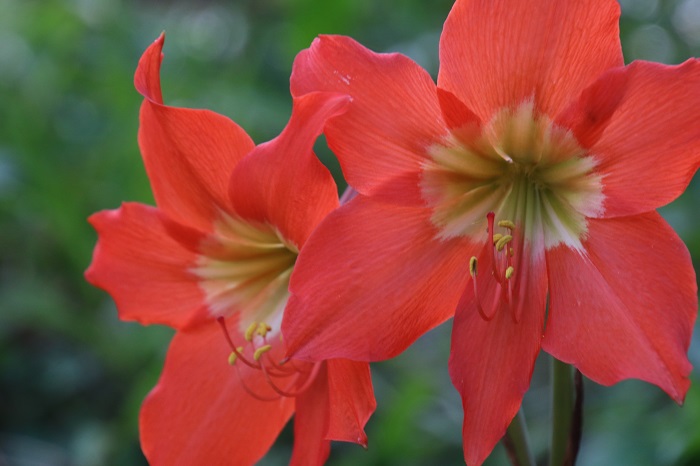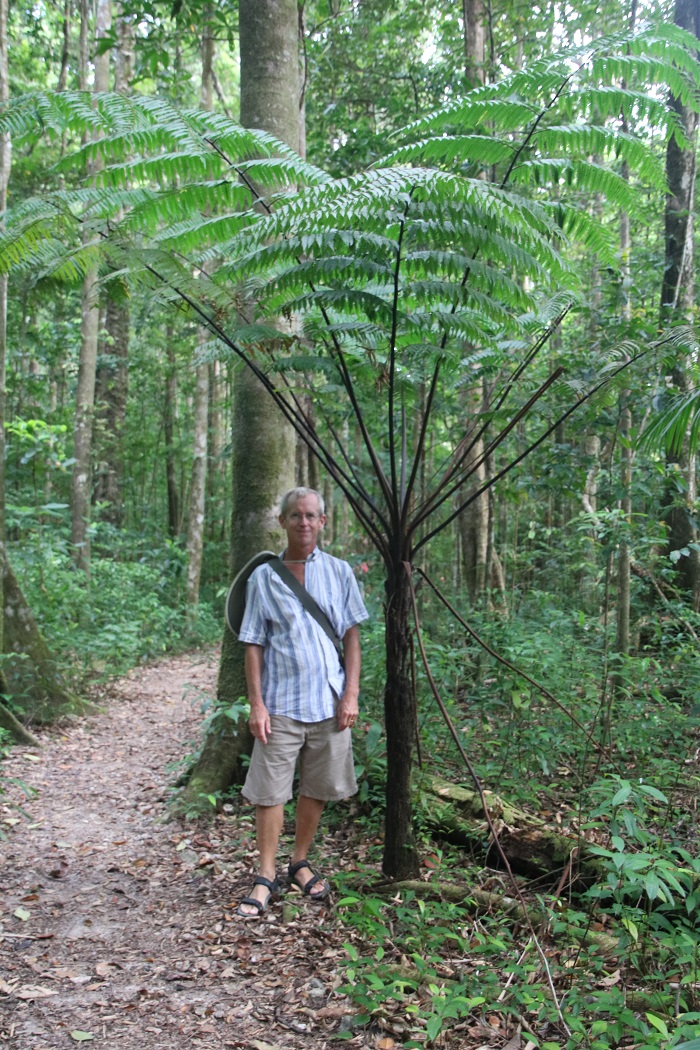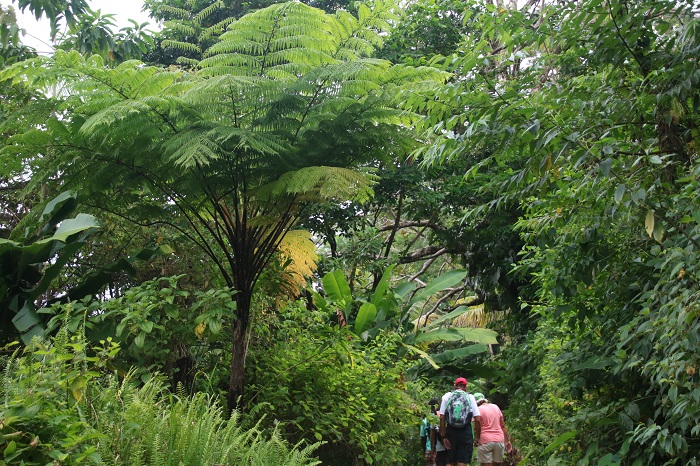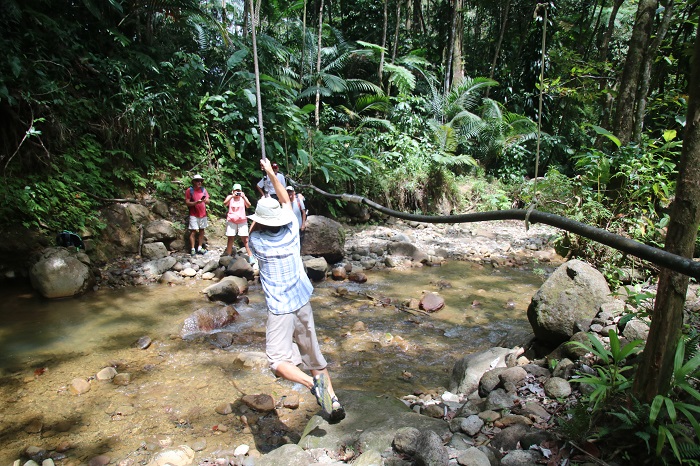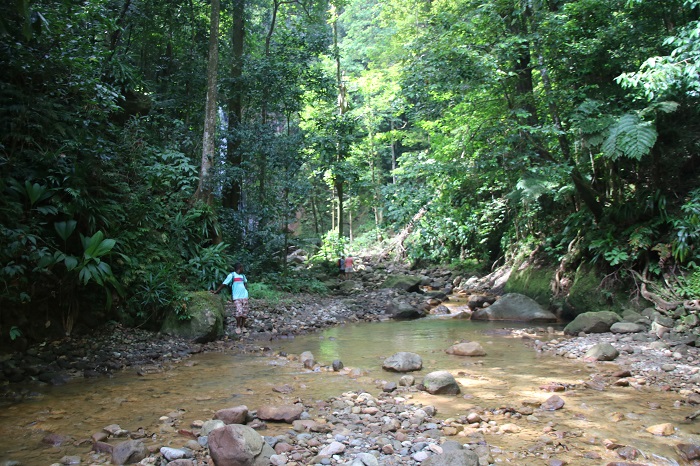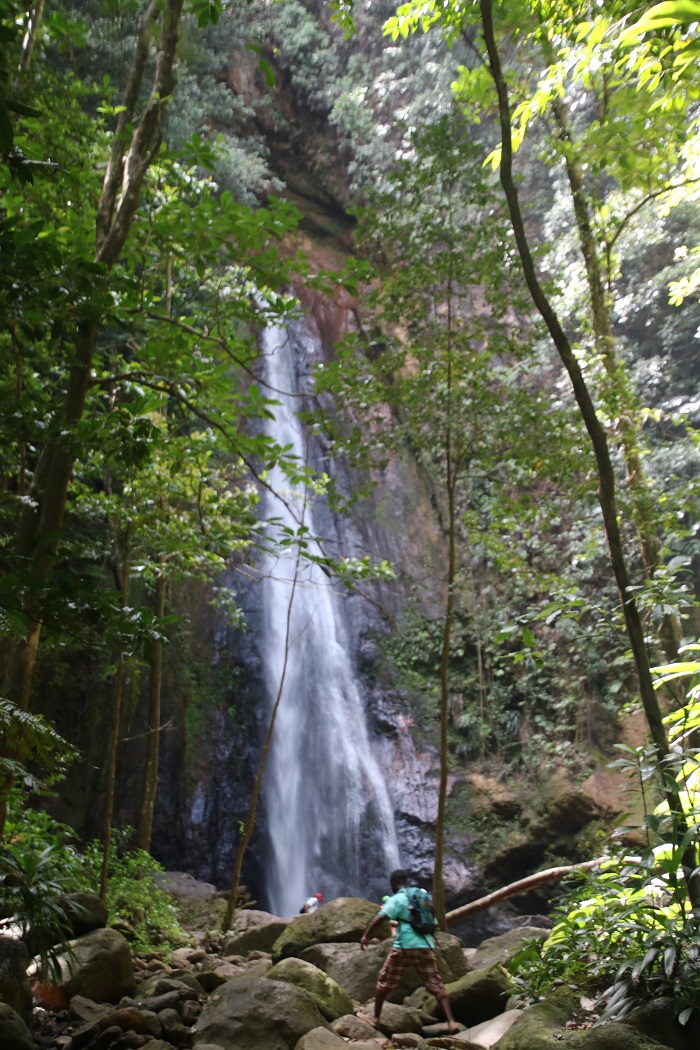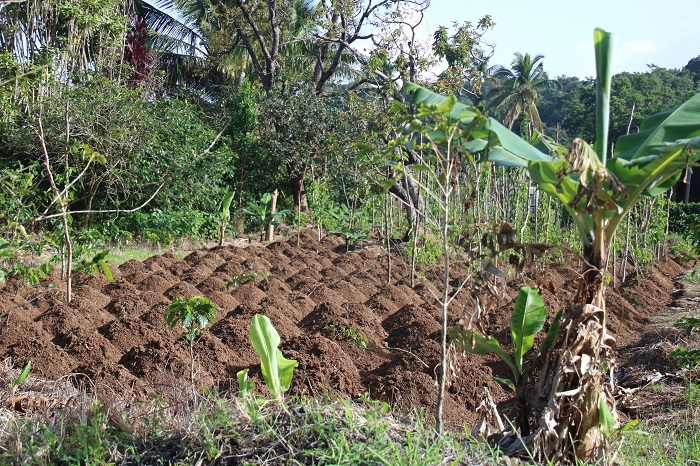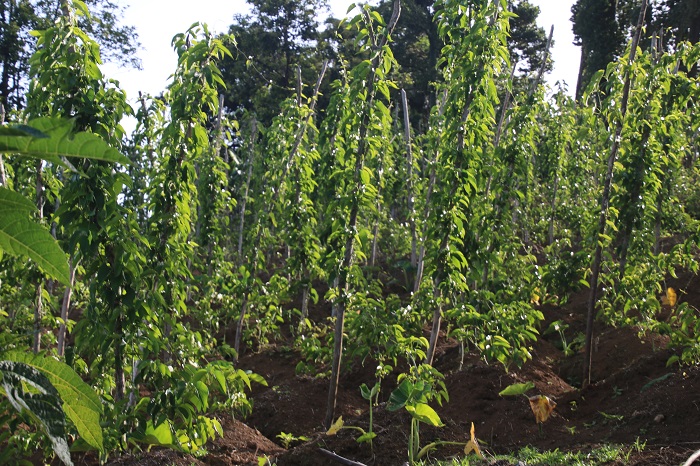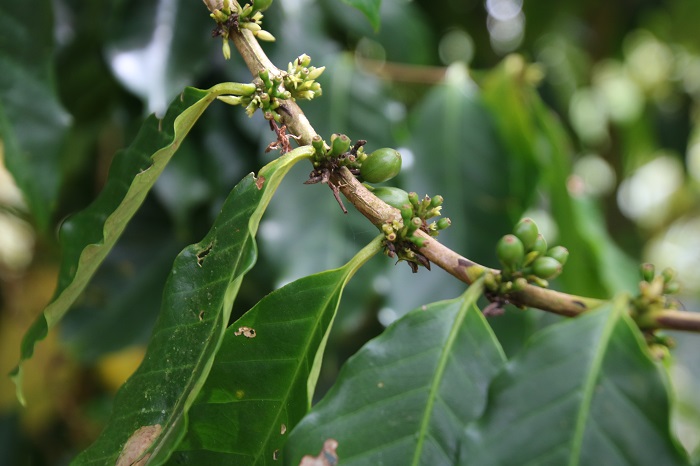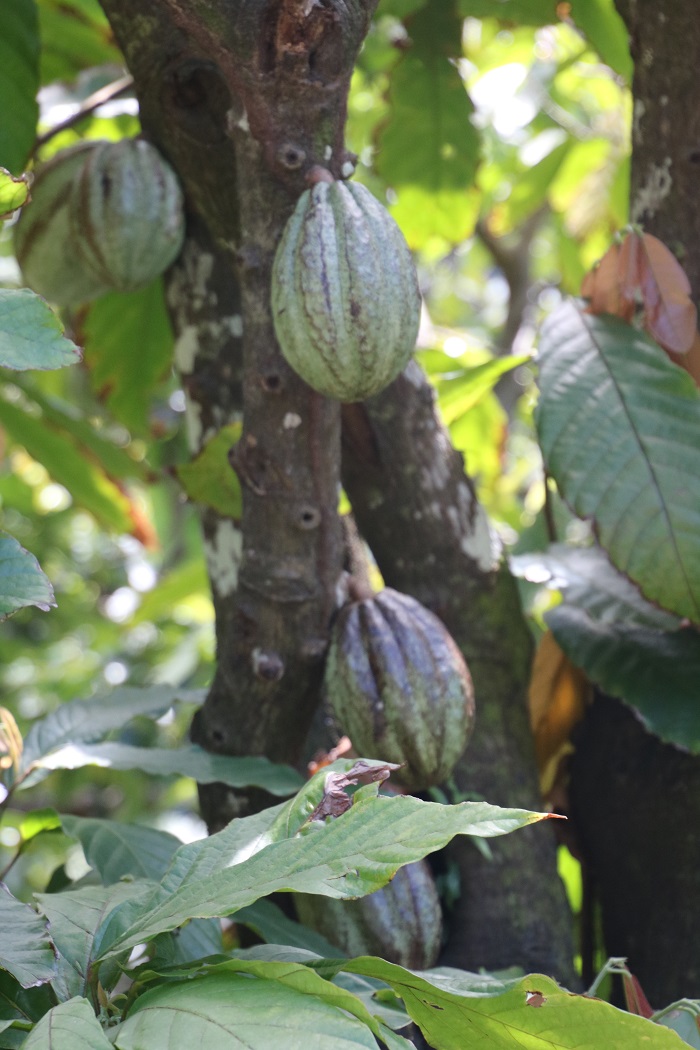This is the final week of my Caribbean winter. When we left home in January, we had no idea how many islands we’d get to visit. As it turns out, it was less than we imagined, but what a trip it’s been. We have only been through the Lesser Antilles, or Leeward Islands so far. Dominica is our final destination before turning north to return to Antigua in time for my flight home this Sunday. It is magical place that has entranced both of us. We will be back again next year.
In the past Dominica had a reputation as a trouble spot for cruisers. A group of locals realized that Dominica is such a gem with so much to offer tourists, as well as so much of traditional island lifestyles that could support the locals, it was worth making an effort to make this island a safe place to visit.
Bob and I arrived just a day before the weekly Saturday market in Portsmouth. We learned that almost everyone on the island has a little plot of land, a small ‘farm,’ that may be only a small fraction of an acre, but is bountiful in supplying so many crops and a few chickens. The market is full of tropical fruits and veggies, like pineapples, bananas, sour sop, Caribbean pumpkins, coconuts, nutmeg, along with plenty of European vegetables like carrots, onions, corn, peppers, eggplant, and even some cold weather veggies like lettuce and cabbage. Many people also have jobs in tourism or government offices, but they all get up extra early each morning to tend their farms. It is quite impressive.
Look at all these coconuts! There were several trucks like this at the market on Saturday morning. We learned that Dominica used to be the biggest exporter of coconut related things until coconut oil took a serious downturn years back during the ‘fat scare.’ Now there are more coconuts than the locals can keep up with, and every time a coconut falls to the ground it germinates into yet another coconut palm.
The tomatoes and cucumbers here are beyond belief–even better than home grown. How do they do it?
This woman was selling flowers along with food. She would not allow us to pay for the flowers, and when we added a few ECs (Eastern Caribbean coins) to her total she threw in a few bananas. She is stunning in the traditional madras head covering.
The next day we hired Faustin Alexis to take on a river tour of the Indian River. He is an excellent guide, so if you find yourself on Dominica you should ask for him. All the guides through PAYS (Portsmouth Association of Yacht Security) get training, and in Faustin’s case, he has become very committed to the traditional way of life and wants to return to it himself while also helping others preserve it for future generations. His enthusiasm for the plants and animals of the rainforest was moving, and it was impressive to see his knowledge of plant life, birds and bird calls, and fish. He says he’d like to return to living in the rainforest when his children are grown.
No motors are allowed on the Indian River, so after Faustin picked us all up from our boats (8 adults and 2 toddlers, plus Faustin which made 9 adults) he walked to the front of the skiff and began rowing into the river. In spite of rowing upstream, he kept up an ongoing conversation, pointing out plants, birds, and bits of traditional lore.
As we entered the river, another tour boat was exiting. I think these tours are highly organized so that there are never more than two boats on the river at once. We could not resist getting a shot of these adorable kids on the other skiff.
We had our own adorable kids onboard as well. They belonged to two Dutch families who happened to meet just before their Atlantic crossing in the Canaries. I hope someday we can share this wonderful experience with our own granddaughter, Tori.
These amazing trees were all along the river.
There was lots of bird life that we saw and sometimes only heard. There were parrots in the upper story, although we could not see them. But we saw the shore birds feeding along the river’s edge. Here is a white heron looking at the little crayfish at the water’s edge.
And a green heron. There is even a type of duck in Dominica, but I missed the name.
And there were so many plants that Faustin identified for us that are used for food or medicine or for general health. He often jumped off the boat to peel some bark from a cinnamon tree, or to pull a branch of bay for us to smell, or a nutmeg laying on the ground, or to show us plants used to make poultices to heal wounds, and the bright magenta leaves of another plant that would be used to wrap as a bandage around the poultice. His knowledge seemed quite encyclopedic. He told us that the older person on record came from Dominica and was a woman who lived to be 127. His own great uncle lived to be 115. Faustin showed us which trees are used to build the traditional houses and which trees are prone to termite infestations.
At the farthest point of the tour upriver we stopped for a bit of a walk, and explored a set of traditional buildings where a couple of men served flavored rum to the tourists and demonstrated how they make it. Here is a big batch of gooseberries being boiled down to flavor a new batch of run.
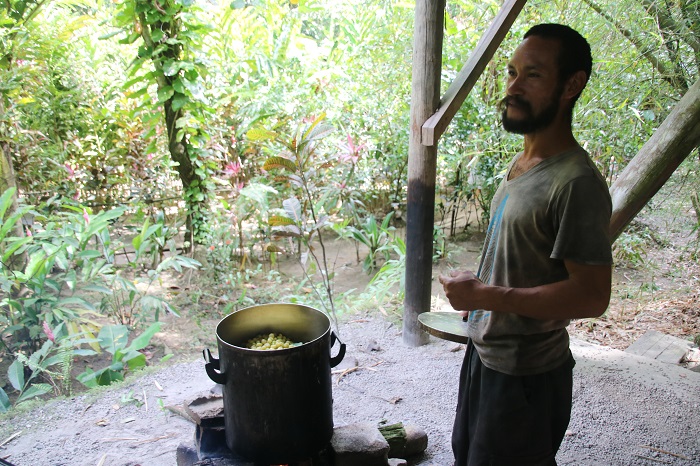 We all enjoyed the day’s drink offerings which were a coconut rum drink or an ‘ultimate’ rum drink. I also had a small taste of the medicinal rum that Faustin had– flavored with ginger root, nutmeg, bay leaves (a very pungent type of bay that must not be bay laurel), a few ingredients I’ve now forgotten, and ganja! What a surprise!
We all enjoyed the day’s drink offerings which were a coconut rum drink or an ‘ultimate’ rum drink. I also had a small taste of the medicinal rum that Faustin had– flavored with ginger root, nutmeg, bay leaves (a very pungent type of bay that must not be bay laurel), a few ingredients I’ve now forgotten, and ganja! What a surprise!
The next day we arranged for Faustin’s nephew Fitzroy to take six of us on a walk through the rainforest up to an impressive waterfall. There were Carol and Bob from Oasis and Dave and Chisholm from Pantine, along with Bob and me.
Fitzroy had a similar respect for the wonders of Dominica as Faustin has. He was an excellent guide. He recognized many bird calls and pointed out to us that the main birdsong we were hearing was that of parrots. They were all around us! After straining and straining to see them in the canopy of leaves, two parrots took flight and shocked all of us with their bright flash of color. No one got a photograph.
This is the forest we walked through. Sometimes there were openings to the sky as here, and sometimes we were in deep shade with the canopy of the trees about 150 feet above the ground.
Looking up into the upper story where plants get the most light, we could see many orchids and bromeliads growing on the tree trunks, as well as huge vines.
In the deep shade there was plenty of plant life too.
There were places with great vistas–
And places so deep in the understory that it drew our focus into the details.
There are even wild amaryllis in the sunnier parts of the rainforest.
Bob and I were particularly on the lookout to see orchids and tree ferns, and there were plenty of both. There are traditional uses for tree ferns in Dominican culture. What we know it best for is a planting material for epiphytic orchids. Fitzroy was surprised to learn that is all we used it for back home.
Tree ferns are very ancient plants, older than humans.
There were plenty of orchids too. Bob was thrilled to find a few brassavola nodosa in bloom on his previous walk, and plenty that would soon be blooming. We saw lots of orchids on our walk to the waterfall, but none in bloom. There were some very tiny orchids and some very large terrestial orchids.
The goal of our walk through the rainforest was a large waterfall. The path we followed crossed the river several times, the final time involved swinging across the river on a large vine, Tarzan style. Here is Bob swinging through the air.
And we’re on our way to the waterfall along the relatively dry river. The rainy season will come in another couple of months. That is our guide Fitzroy in the distance.
You can see how high it is based on how small our fellow travelers are!
Along the edges of the forest there are houses and small farms, places where the locals have burned a bit of the rainforest to create a small plot for growing their own food. Here are lots of banana trees, coconut palms, and plots of vegetables. This plot which was labor intensive to start is for a type of yam vine. Each tuber was planted into its own mound of soil.
And the locals are growing coffee plants and cocoa plants. This is a branch of unripe coffee beans.
–and a branch of rather ripe cocoa seeds. Inside these pods are strands of thick cocoa. I bought some in the market and they have a deep chocolate aroma.
At the end of the day Fitzroy asked me what I use all the plants for that I grow. I was left a bit tongue tied by that. Use? I grow a few herbs and vegetables, but mostly I grow plants for the sheer enjoyment of it. That is all I could tell him. He was surprised by this. What a very different culture we were experiencing here on Dominica. This is my lesson from visiting this place. Perhaps I can figure out how to be a bit more conscious how I can be more self sustaining.
Yesterday we began the trek northward so I can catch my flight home on Sunday from Antigua. We have returned to Terre de Haut in the Saintes and treated ourselves to a wonderful dinner out last night at Bon Vivre. We were happily surprised when Judie and Phil from Rum Runner walked into the restaurant shortly after we sat down. We shared a table together, and tonight we will have them aboard Pandora for a last dinner before we each head our separate ways.

